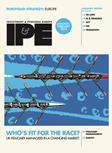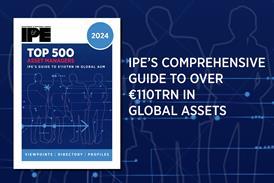Asset Allocation
In-depth reporting on asset allocation for our pension fund and asset management readers from IPE’s award-winning journalists
-
 News
NewsGenerali Italia boosts investments in domestic private assets to €4.7bn
Increasing investments in the domestic economy are linked to the growth of the supplementary pension sector
-
 Features
FeaturesCross-border investment barriers: issues for institutional investors
Protectionist trade policies are back in vogue, fuelled by the rise of China’s economy and, more recently, by the escalation of geopolitical tensions.
-
 Interviews
InterviewsEuropean pension funds on investing in their home market: a delicate balance
Pension funds in Europe have been reducing their allocation to European assets, especially listed ones. While valuations may be attractive, there is little else to convince them to raise their investments in their home market
-
 Features
FeaturesIPE Quest Expectations Indicator - January 2025
The erosion in trust in the US is promoted by its refusal to participate in a proposed trigger force in Ukraine. In response, European defence expenses are rising, in particular in Poland, the Baltics and Scandinavia.
-
 Features
FeaturesFixed income, rates, currencies: Uncertainty reigns as Trump 2.0 takes office
Now that Donald Trump has been installed as US president, there should be more clarity around some of the timings of his probable new policies.
-
 News
NewsSwiss schemes nudged to cut fixed income amid low interest rates
From 2014 to 2022, Swiss pension schemes’ allocation to fixed income investments fell from 39.2% to 31.7%
-
 News
NewsNorway SWF underperforms index in 2024, hampered by allocation and real assets
‘Insurance is always expensive if your house doesn’t burn down,’ says Tangen
-
 News
NewsSwiss schemes’ investment strategies have margin for higher returns – study
WTW’s research concluded that 25% of pension funds can increase their expected returns by an average of 0.84% per year
-
 News
NewsPrecious metals, equities propel Publica’s returns to 5.9%
Precious metals were among the best-performing asset classes in Publica’s portfolio last year, returning 33%
-
 News
NewsCassa Geometri plans €150m private equity investment
The scheme will pursue buy-out and growth capital strategies, investing in primary or secondary markets
-
 News
NewsVBL to boost private equity and private debt investments
New allocations will be financed through new premiums and a mix of public equities, gold and cash, says CIO Michael Leinwand
-
 News
NewsPrevAer shifts to multi-asset strategy
Eurizon will run the strategy across the scheme’s three sub-funds through Alternative Investment Funds
-
 News
NewsTPI adds coal mining sector to carbon performance assessments
The move comes as investors and governments aim to tackle the environmental fallout of coal mining
-
 News
News26 UK councils call on chancellor to remove ‘principal advice’ on asset allocation
Chancellor Rachel Reeves proposes that LGPS pools replace role provided by investment consultants and independent advisers in providing investment strategy advice
-
 News
NewsInarcassa boosts domestic investments as 2024 returns exceed expectations
The scheme is increasing allocations in private markets and equities as it records returns of more than 7.6% in 2024
-
 News
News2024 a record year for European ETFs but thematics disinvested
Morningstar research confirms 2024 as top year for ETFs although ESG sales have continued to decelerate
-
 News
NewsAP2 hires new CIO Anna Hammer to continue portfolio changes
Gothenburg-based buffer fund poaches Länsförsäkringar CIO to fill gap after losing Erik Kleväng Callert to SEB Trygg Liv
-
 News
NewsNordea, Danica, PBU lead Danish 2024 pension returns; home bias dents gains
Currency hedging knocked average 3.6 points off returns last year for 60/40 portfolio, according to consultant Nikolaj Holdt Mikkelsen
-
 News
NewsSOKA-BAU’s sub-fund to boost international investments
It also plans to invest 5% in private debt – its first investment in the asset class
-
 News
NewsPensionDanmark to ramp up equities after 17% stocks gain in 2024
Danish pension fund to increase the equity proportion particularly for younger scheme members, and postpone risk reduction starting point by five years to age 50





